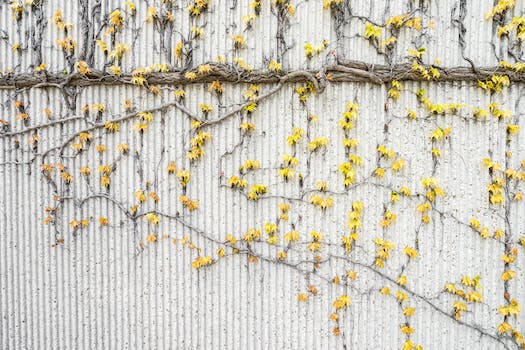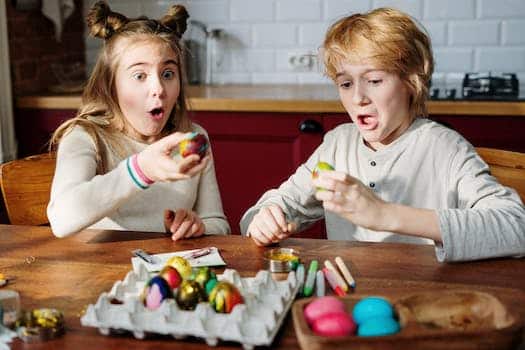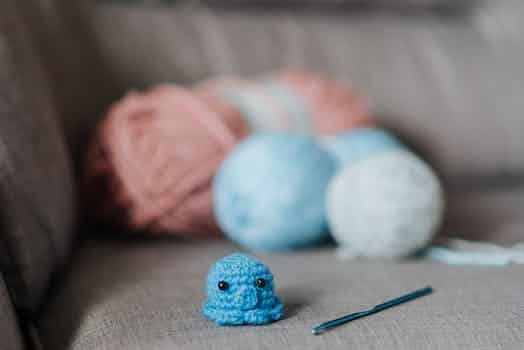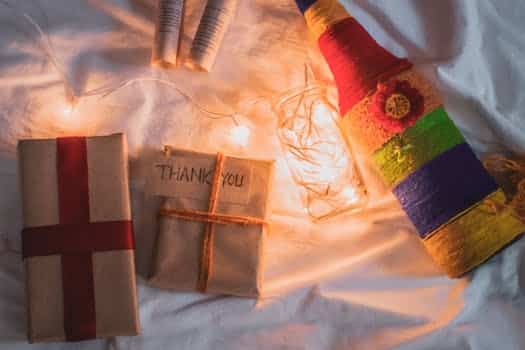In today’s world of interior design, DIY projects have become increasingly popular. One of the most versatile and cost-effective ways to decorate your walls is by creating your own artwork. Using fabric and embroidery hoops, you can create unique and personalized wall art that can transform any room in your home. In this article, we will be sharing 10 DIY wall art ideas using fabric and embroidery hoops that are easy to make and will leave a lasting impression.
- 1. Introduction
- 1.1. What is DIY wall art?
- 1.2. Why use fabric and embroidery hoops?
- 1.3. Benefits of creating your own wall art
- 2. Choosing your Fabric and Embroidery Hoops
- 2.1. Selecting the right fabric
- 2.2. Different types of embroidery hoops
- 2.3. Sizing your hoops and fabric
- 2.4. Preparing your fabric
- 2.5. Attaching your fabric to the hoop
- 3. Creating Your Design
- 3.1. Choosing a design or pattern
- 3.2. Using stencils and templates
- 3.3. Creating your own design
- 3.4. Tips for arranging your design
- 3.5. Transferring your design onto the fabric
- 4. Embroidery Techniques
- 4.1. Choosing the right embroidery thread
- 4.2. Different types of embroidery stitches
- 4.3. Adding dimension and texture to your design
- 4.4. Tips for neat and even stitches
- 4.5. Finishing off your embroidery
- 5. Displaying Your Wall Art
1.Introduction
Are you tired of staring at blank, boring walls but don’t want to spend a fortune on art? Look no further than your local craft store and your own fabric stash! With just a few embroidery hoops and some fabric, you can create your own personalized wall art. Not only is it budget-friendly, but it also adds a unique touch to your home decor. In this article, we’ve compiled 10 DIY wall art ideas using fabric and embroidery hoops that are sure to inspire your creativity.
1.1.What is DIY wall art?
DIY wall art refers to creating your own artwork or decorations to hang on your walls. This can be done using a variety of materials, including fabric and embroidery hoops. DIY wall art is a great way to personalize your living space and add a unique touch to your home decor. With a little creativity and some basic crafting skills, anyone can create beautiful and original wall art that reflects their personal style and taste.
1.2.Why use fabric and embroidery hoops?
Fabric and embroidery hoops are a great combination for creating DIY wall art. Here are a few reasons why:
1. Fabric comes in a wide variety of colors and patterns, making it easy to find something that matches your decor.
2. Embroidery hoops provide a sturdy frame for the fabric and help keep it taut and wrinkle-free.
3. Using fabric and embroidery hoops is a cost-effective way to create unique and personalized wall art.
4. Fabric is easy to work with and can be cut, sewn, and glued to create a variety of shapes and designs.
Overall, using fabric and embroidery hoops is a fun and creative way to add some color and texture to your walls.
1.3.Benefits of creating your own wall art
Creating your own wall art is a fun and rewarding experience that has many benefits. Firstly, it allows you to express your creativity and showcase your personal style in your home. You can choose the colors, patterns, and textures that appeal to you and design a piece that is truly unique. Additionally, creating your own wall art is often more affordable than buying pre-made pieces, as you can use materials that you already have or purchase them at a lower cost. It also gives you the opportunity to upcycle or repurpose items, reducing waste and giving new life to old objects. Finally, making your own wall art can be a great way to relax and unwind, providing a creative outlet for stress and anxiety.
2.Choosing your Fabric and Embroidery Hoops
When it comes to creating DIY wall art using fabric and embroidery hoops, one of the most important factors is choosing the right materials. First, consider the type of fabric you want to use. Cotton and linen are popular choices, as they are easy to work with and come in a variety of colors and patterns. You may also want to consider the weight and texture of the fabric, as well as its durability over time.
Next, think about the size and shape of your embroidery hoops. The hoops should fit your fabric securely, without any bunching or sagging. You can choose from a range of sizes, from small 4-inch hoops to larger 12-inch hoops, depending on the size of your wall art. Additionally, you may want to consider the material of the hoop itself – traditional wooden hoops are popular, but plastic and metal options are also available.
Ultimately, the fabric and embroidery hoops you choose will depend on your personal style and the look you are trying to achieve. Take your time to browse different options and experiment with different combinations until you find the perfect fit for your DIY wall art project.
2.1.Selecting the right fabric
When it comes to creating DIY wall art using fabric and embroidery hoops, selecting the right fabric is key. The fabric should be sturdy enough to hold its shape when stretched in the hoop, yet soft enough to easily manipulate and embroider. Cotton, linen, and muslin are great fabric options for this type of project. Consider the color and pattern of the fabric as well, as it will play a big role in the overall look of your finished piece.
2.2.Different types of embroidery hoops
Embroidery hoops come in different shapes and sizes, and each type is designed for specific embroidery techniques. The most common types of embroidery hoops are round, oval, square, and rectangular. Round hoops are perfect for beginners and are commonly used for cross-stitch and hand embroidery. Oval hoops are great for embroidering curved designs, such as flowers or leaves. Square and rectangular hoops are ideal for embroidery on clothing or home decor items, such as napkins and tablecloths. Some embroidery hoops also come with adjustable screws, which allow you to adjust the tension of the fabric and ensure a smooth, even embroidery surface.
2.3.Sizing your hoops and fabric
When it comes to creating DIY wall art using fabric and embroidery hoops, it’s important to choose the right size for both the hoop and fabric. The size of the hoop will depend on the size of the design you want to create, as well as the size of the space where you plan to hang your finished piece. It’s also important to choose a fabric that is the right size for your hoop. You want to make sure that the fabric is large enough to fit snugly around the hoop, but not so large that it becomes difficult to work with. A good rule of thumb is to choose a fabric that is at least 2 inches larger than the hoop on all sides. This will give you enough fabric to work with while also ensuring that the fabric is secure in the hoop.
2.4.Preparing your fabric
Before beginning any embroidery project, it is important to prepare your fabric properly. First, wash and dry your fabric to remove any sizing or chemicals that may affect the embroidery process. Next, iron your fabric to remove any wrinkles or creases. It is also important to choose a fabric that is appropriate for embroidery. Look for fabrics that have a tight weave and are not too stretchy. This will make it easier to create crisp, clean lines with your embroidery.
2.5.Attaching your fabric to the hoop
Before you start with any embroidery project, it is important to attach your fabric securely to the embroidery hoop. This ensures that your fabric remains taut and doesn’t move around while you are embroidering. Here is a step-by-step guide on how to attach your fabric to the hoop:
1. Start by separating the hoop into two parts – the outer ring and the inner ring.
2. Place the inner ring on a flat surface with the screw facing up.
3. Lay your fabric over the inner ring, ensuring that it is centered and straight. Make sure that the fabric is large enough to cover the entire hoop.
4. Place the outer ring over the fabric and inner ring, making sure that the fabric is taut and wrinkle-free.
5. Tighten the screw on the outer ring until the fabric is securely held in place. Make sure not to over-tighten the screw as it may damage the fabric.
6. Once the fabric is attached, trim the excess fabric leaving about an inch around the hoop.
Your fabric is now attached to the hoop and ready for embroidery!
3.Creating Your Design
When it comes to creating your own DIY wall art using fabric and embroidery hoops, there are endless possibilities for designs. One approach is to choose a theme or color scheme that matches the room where the art will be displayed. For example, if you are creating art for a nursery, you may want to focus on pastel colors or cute animal designs. Another approach is to use bold, contrasting colors and patterns to create a statement piece that stands out in any room.
Once you have a general idea of the design you want to create, it’s time to choose your materials. Consider the type of fabric and embroidery hoop size that will work best for your design. Cotton and linen fabrics are popular choices for embroidery projects, but you can also experiment with silk or satin for a more luxurious look. For hoop size, larger hoops will give you more space to work with, but smaller hoops can be easier to handle and transport.
Once you have your materials, it’s time to start creating your design. You can sketch out your design on paper first or simply start stitching directly onto the fabric. There are many different embroidery stitches to choose from, including backstitch, chain stitch, and French knot. Don’t be afraid to experiment with different stitches and techniques to create a unique and personalized piece of art.
Finally, once your design is complete, it’s time to display your new DIY wall art. Embroidery hoops make it easy to hang your art with a simple nail or hook. You can also experiment with different ways to display your art, such as arranging multiple hoops in a cluster or adding other decorative elements like tassels or pom-poms. With a little creativity and some basic embroidery skills, you can create beautiful and unique wall art that adds a personal touch to any room.
3.1.Choosing a design or pattern
When it comes to choosing a design or pattern for your DIY wall art project, there are endless possibilities. Consider the overall style of your room and choose a design or pattern that complements it. If you’re going for a bohemian look, consider a colorful, intricate pattern. If you prefer a more minimalist look, stick to simple geometric shapes or a monochromatic color scheme. You can also get creative and choose a design that has personal meaning to you, such as a favorite quote or a symbol that represents something important to you. The key is to choose a design or pattern that you love and that will make a statement in your space.
3.2.Using stencils and templates
Using stencils and templates can be a great way to create a unique and professional-looking design for your DIY wall art project. Stencils can be purchased at most craft stores or online, and they come in a variety of shapes and sizes. Templates can also be found online and printed out for use. To use a stencil, simply place it on your fabric and use a brush or sponge to apply paint or ink. With templates, you can trace the design onto your fabric and then fill it in with paint or embroidery thread. Experiment with different colors and designs to create a one-of-a-kind piece of art for your home.
3.3.Creating your own design
When it comes to creating your own design for DIY wall art using fabric and embroidery hoops, the possibilities are endless. Start by choosing a fabric that inspires you and matches the color scheme of your room. You can either use a solid color or a patterned fabric, depending on your preference.
Next, consider the size of the embroidery hoop you will be using. If you want a larger piece of wall art, choose a larger hoop. If you want to create a gallery wall with smaller pieces, go for smaller hoops.
Once you have your fabric and hoop size chosen, you can begin to think about your design. You can create a simple design, such as a monogram or a single word, or you can get more creative and create a pattern or picture using different fabrics and colors.
To create your design, you can use stencils or templates to trace onto your fabric, or you can freehand your design using a fabric pen or chalk. Once you have your design traced or drawn onto the fabric, you can begin to cut out the shapes and pieces you will need to assemble your wall art.
Finally, use your embroidery hoop to secure your fabric in place, ensuring that it is tight and wrinkle-free. Trim any excess fabric from the back of the hoop, and your DIY wall art is ready to hang and enjoy!
3.4.Tips for arranging your design
When it comes to arranging your DIY wall art, there are a few tips to keep in mind to ensure that your design looks cohesive and visually appealing. First, consider the placement of your pieces on the wall. You want to create balance and symmetry, so try to evenly distribute your pieces throughout the space. Next, consider the color scheme of your design. Make sure that the colors in your fabric and embroidery hoops complement each other and the overall color scheme of your room. Finally, experiment with different layouts and arrangements until you find one that you love. Don’t be afraid to mix and match different sizes and shapes of embroidery hoops to create a unique and personalized look.
3.5.Transferring your design onto the fabric
Once you have your design ready, it’s time to transfer it onto the fabric. There are a few ways to do this depending on the type of fabric you’re using and the tools you have available.
One popular method is to use transfer paper. Simply print your design onto the transfer paper and then iron it onto the fabric. Be sure to follow the instructions on the transfer paper package for the best results.
Another option is to use a lightbox or tracing paper. Place your design underneath the fabric and use a pencil or pen to trace the design onto the fabric. This method works well for lighter fabrics.
If you’re using a darker or thicker fabric, you may need to use a fabric pen or chalk to transfer the design. Simply draw the design onto the fabric using the pen or chalk and then embroider over it.
No matter which method you choose, be sure to test it on a scrap piece of fabric first to ensure that it works well with your materials.
4.Embroidery Techniques
Embroidery is a beautiful and versatile craft that can be used to create stunning wall art. Here are some embroidery techniques that you can use to create unique and beautiful designs:
1. Satin Stitch: This stitch is perfect for filling in large areas with solid color. It involves stitching closely spaced straight stitches in a horizontal or vertical direction, creating a smooth and shiny surface.
2. Back Stitch: This is a basic stitch that is perfect for outlining shapes and creating fine details. It involves stitching backward in a straight line, then stitching forward again to create a continuous line.
3. French Knot: This is a decorative stitch that creates small, raised knots on the fabric. It can be used to create texture and add detail to your embroidery.
4. Chain Stitch: This is a versatile stitch that can be used to create lines, curves, and even fill in shapes. It involves creating loops of thread and stitching them together to create a chain-like effect.
By using these embroidery techniques, you can create beautiful and unique wall art that is sure to impress!
4.1.Choosing the right embroidery thread
When it comes to embroidery, choosing the right thread is crucial for achieving the desired result. There are a variety of embroidery threads available on the market, including cotton, silk, wool, and polyester. Cotton is a popular choice for beginners because it is affordable and easy to work with. Silk thread is known for its lustrous finish and is often used for fine embroidery work. Wool thread is great for adding texture and dimension to embroidery designs. Polyester thread is a durable option that is resistant to fading and fraying. When choosing a thread, consider the type of fabric you will be embroidering on, the type of design you will be creating, and your personal preference for color and texture.
4.2.Different types of embroidery stitches
Embroidery is a beautiful art form that involves decorating fabrics with needle and thread. There are many different types of embroidery stitches that can be used to create intricate and stunning designs. Some of the most popular embroidery stitches include the backstitch, chain stitch, satin stitch, and French knot. The backstitch is a basic stitch that is great for outlining and creating straight lines. The chain stitch is a looped stitch that can be used to create decorative borders and patterns. The satin stitch is a smooth stitch that is perfect for filling in larger areas. The French knot is a delicate stitch that creates small, raised dots. With these and other embroidery stitches, you can create a wide range of beautiful designs on fabric.
4.3.Adding dimension and texture to your design
One great way to add dimension and texture to your DIY wall art is by incorporating embroidery techniques. Embroidery can add a unique and personal touch to your design, and can be used in various ways. Here are some embroidery techniques you can try:
1. Satin stitch: This stitch is great for filling in shapes with smooth and shiny threads.
2. French knot: This stitch creates a raised, textured dot and can be used to fill in small areas or create a border.
3. Backstitch: This stitch is great for outlining shapes or creating text.
4. Cross-stitch: This stitch creates a textured pattern that can be used to fill in larger areas.
By incorporating embroidery techniques into your DIY wall art, you can create a unique and textured piece that will stand out in any room.
4.4.Tips for neat and even stitches
Embroidery is a beautiful form of art that requires precision and patience. To achieve neat and even stitches, here are some tips:
1. Use a hoop: Using a hoop will help keep the fabric taut and prevent puckering. Make sure to adjust the tension of the hoop as needed.
2. Choose the right thread: Use high-quality embroidery thread that matches the color of your fabric. Avoid using cheap thread as it can break easily and ruin your work.
3. Thread your needle correctly: Make sure to thread your needle correctly to avoid tangles and knots. Cut a length of thread that is manageable and easy to work with.
4. Practice good posture: Sit up straight and keep your arms supported to avoid hand and wrist strains.
By following these tips, you can achieve beautiful and consistent stitches that will make your DIY wall art project stand out.
4.5.Finishing off your embroidery
Once you’ve completed your embroidery design, it’s important to finish it off properly. First, remove the fabric from the hoop and gently iron it to remove any wrinkles. Next, trim the excess fabric around the edges, leaving about an inch of fabric. Fold the edges of the fabric over the back of the hoop and secure with glue or a running stitch. Finally, add a hanger to the back of the hoop using ribbon or twine. Your finished embroidery is now ready to be hung on the wall and admired!
5.Displaying Your Wall Art
Once you have created your DIY wall art using fabric and embroidery hoops, it’s time to display them on your walls. There are several ways to do this, depending on the size and style of your artwork.
One option is to create a gallery wall, which involves hanging multiple pieces together in a cohesive arrangement. You can mix and match different sizes and styles of artwork, or create a more uniform look with matching frames.
Another option is to hang your artwork individually, using picture-hanging hooks or adhesive strips. This is a great option for smaller pieces that can be easily moved or changed out over time.
Finally, you can use shelves or ledges to display your artwork. This allows you to easily switch out pieces and create a layered look on your walls.
Regardless of how you choose to display your DIY wall art, be sure to take into account the overall style and color scheme of your room. Your artwork should complement your existing decor and add personality and interest to your space.
5.1.Choosing the right wall space
When it comes to displaying your DIY wall art, choosing the right wall space is key. You want to select a spot that is visible and will showcase your artwork in the best possible way. Consider the size and shape of your piece, as well as the colors and patterns in the fabric you used. A blank wall in a living room or bedroom is a great option, as is a hallway or entryway. Just make sure you measure the space and your artwork beforehand to ensure a perfect fit.
5.2.Creating a gallery wall
Creating a gallery wall is a great way to display your wall art and add a personal touch to your living space. To start, choose a focal point for your gallery wall, such as a large piece of artwork or a unique object. Then, select a variety of wall art pieces in different sizes and shapes to complement your focal point. Arrange the pieces on the wall in a way that is visually appealing and balanced. You can also add interest by mixing in other decorative elements such as plants or framed photographs.
5.3.Mixing and matching different designs
One fun way to create a unique and striking display of wall art is to mix and match different designs. This can be done by combining different fabrics, textures, and colors in embroidery hoops of varying sizes. You could use bold, graphic prints alongside more delicate florals, or pair a vintage-inspired fabric with a modern geometric pattern. The key is to experiment and have fun with the combinations until you find a mix that speaks to your personal style and tastes.
5.4.Using frames and other decorative elements
Frames and decorative elements can add an extra touch of sophistication to your wall art. You can use frames to give your embroidery hoop art a more polished look, or you can use decorative elements like ribbons or tassels to add some flair. When choosing frames or other decorative elements, make sure they complement the colors and style of your fabric and embroidery hoop art. You can also mix and match frames and decorative elements to create a unique and eclectic look.
5.5.Tips for hanging your wall art
When it comes to hanging your wall art, there are a few things to keep in mind in order to ensure that it looks its best. First, consider the placement of the piece – is it going to be the focal point of the room, or is it more of a complementary piece? This will determine where on the wall it should be hung. Next, make sure to use the right hardware for the weight of the piece. If it’s heavy, you’ll want to use a sturdy picture hanger or wall anchor. Finally, take your time when hanging the piece – use a level to make sure it’s straight, and step back frequently to make sure it looks just right.
Conclusion
In conclusion, creating DIY wall art using fabric and embroidery hoops is a fun and affordable way to add a personal touch to your home decor. With these 10 ideas, you can easily customize your space to reflect your style and personality.






These 10 innovative and imaginative DIY home decor ideas from [object Object] provide a refreshing approach to enhancing ones living…